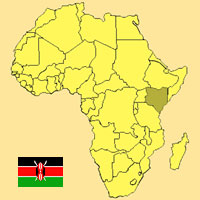In the past decade, infrastructure contributed 0.5 percentage points to Kenya's annual per capita GDP growth. Raising the country’s infrastructure endowment to that of Africa's middle-income countries could increase that contribution by 3 percentage points. Several accomplishments are notable. More than 90 percent of the population has access to GSM cell signals.
A successful public-private partnership in air transport has made Kenya's airline a top carrier in the region and its international airport a key gateway to Africa. Institutional reforms in the power sector have reduced the burden of subsidies on the public by approximately 1 percent of GDP. But the power sector continues to pose Kenya's greatest infrastructure challenge. Over the next decade, current capacity will have to double.
A second challenge is to improve the efficiency of operations at the Port of Mombasa. Other concerns include low levels of access to household services, underfunding of road maintenance, and negative progress on the Millennium Development Goals for water supply and sanitation. Addressing Kenya's infrastructure deficit will require sustained expenditures of approximately $4 billion per year (20 percent of GDP) over the next decade. As of 2006, Kenya needed and additional $2.1 billion per year (11 percent of GDP) to meet that funding goal.
The gap could be halved through the use of more efficient technologies to meet infrastructure targets in the transport and WSS sectors. If Kenya is unable to increase infrastructure spending, it could nevertheless meet infrastructure targets in 18 years by eliminating existing inefficiencies in infrastructure sectors.
Author: Briceno-Garmendia, Cecilia M.; Shkaratan, Maria;Document Date: 2011/03/01.Document Type: Policy Research Working Paper.Report Number: WPS5596.Volume No: 1 of 1


No comments:
Post a Comment
prueba